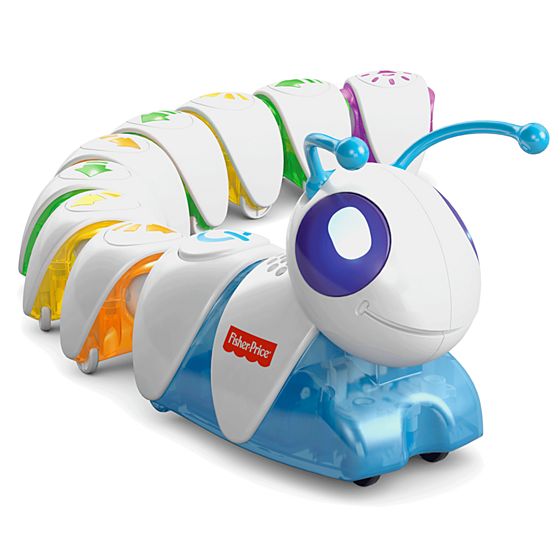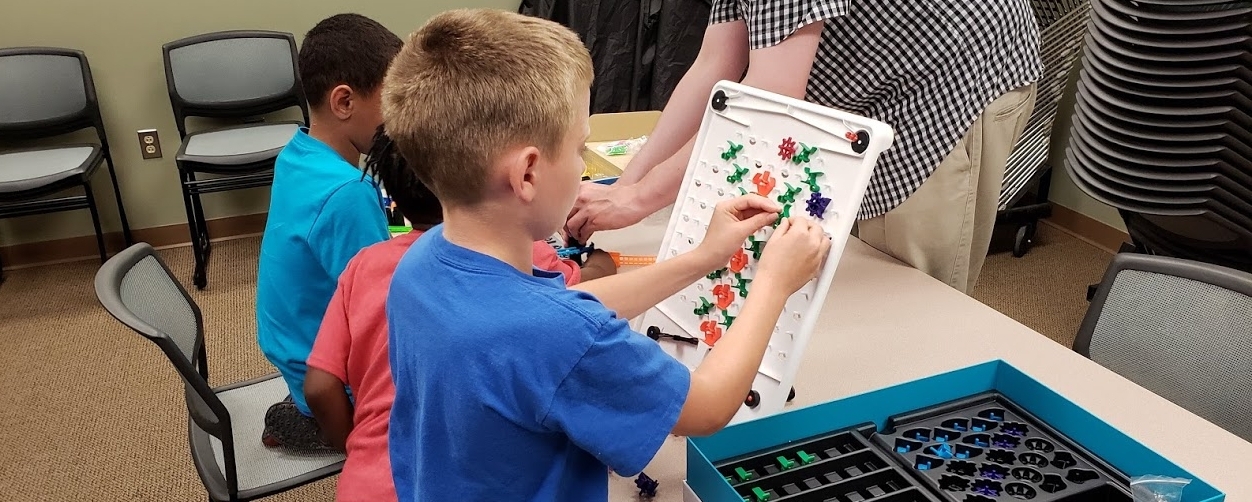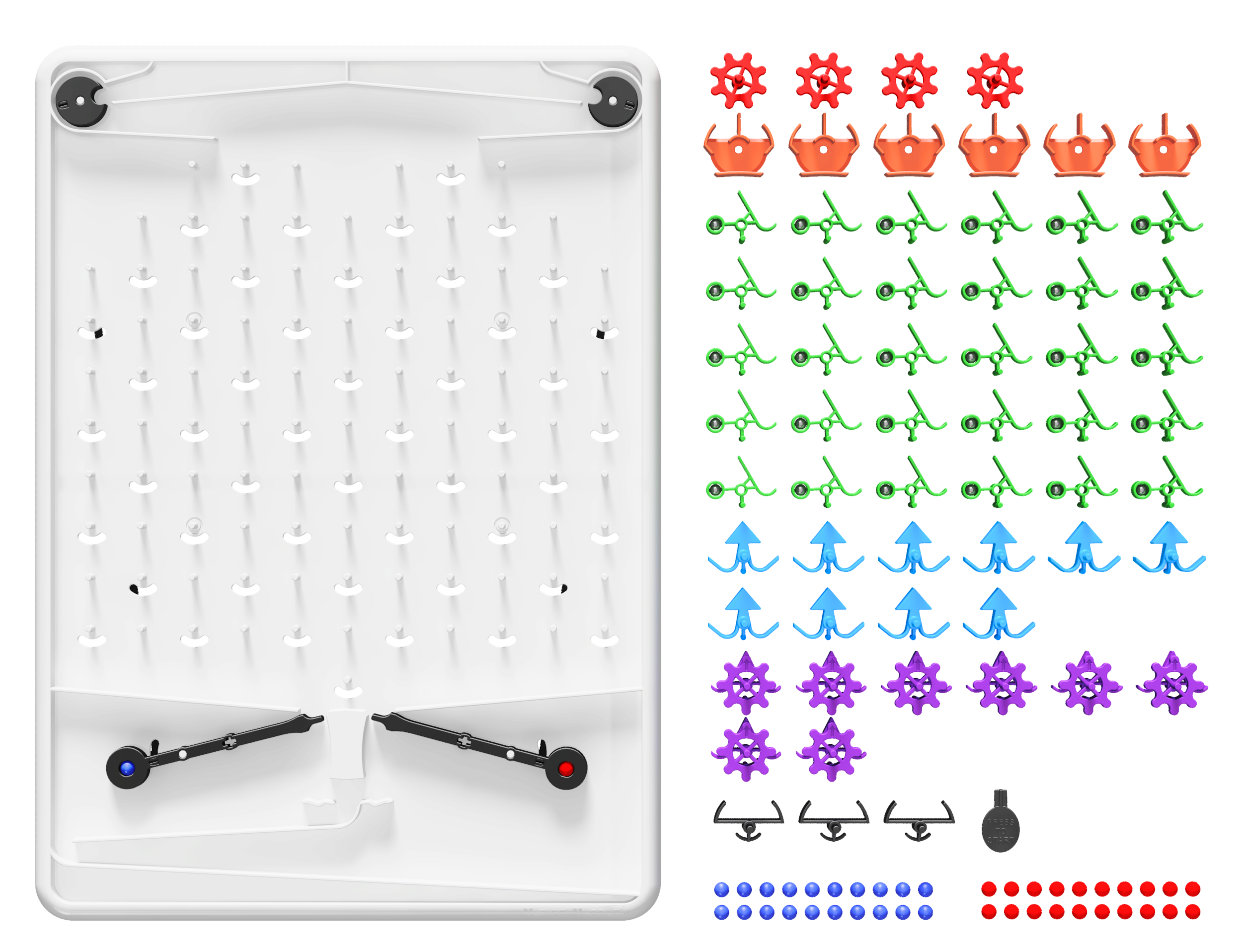Ages: 3+
Requires Batteries: 4 AA
Single Player
Publisher: Fisher-Price
Price: $49.99
Code-A-Pillar is an electric Caterpillar toy where children plug in segments labeled with commands into the main Caterpillar body and then watch as it carries out each command one by one down the line.
Code-A-Pillar teaches the basic framework of Coding, inputting commands and the machine following them. The tactile nature and durability of this toy makes it very approachable for young age groups and perfect for experimental play. Users can also create extra challenges for themselves through creating obstacle courses or just trying to get Code-A-Pillars from a start point to a specific endpoint.
Code-A-Pillar is adorable. It’s too cute not to touch and play around with as our teens and patrons can attest. It’s also very durable and has safeguards in place to keep it from breaking, such as a bump sensor that keeps it from running itself into objects. There is also a large variety of different parts that can be purchased to expand what commands Code-A-Pillar is capable of, such as a pack of silly sounds or extra movement with 180 Degree turns and Repeat Action blocks.
Code-A-Pillar is pricey at $49.99 MSRP and availability is limited. It requires 4AA batteries (which are included). Code-A-Pillar is loud and there’s no way to turn down the sound without taking it apart , which may be a big concern if you work with children sensitive to loud noises.
Code-A-Pillar is a fantastic and sturdy introductory toy to programmed movement for young age groups. It’s great for programs of its own if you can afford multiples or do workstations and as supplementary to existing programs such as storytime. While pricey our Code-A-Pillars see a lot of play, and there are a number of venues that sell them at a discount.
Article by Stephanie Frey
Stephanie Frey can be found roaming Twitter. She can also be found selling goodies on Society6.
Games in Schools and Libraries is produced in association with Inverse Genius and the Georgetown County Library System.
Games in Schools and Libraries Group on Facebook
Games in Schools and Libraries Guild at Board Game Geek
Email us: schoolsandlibraries@gmail.com




